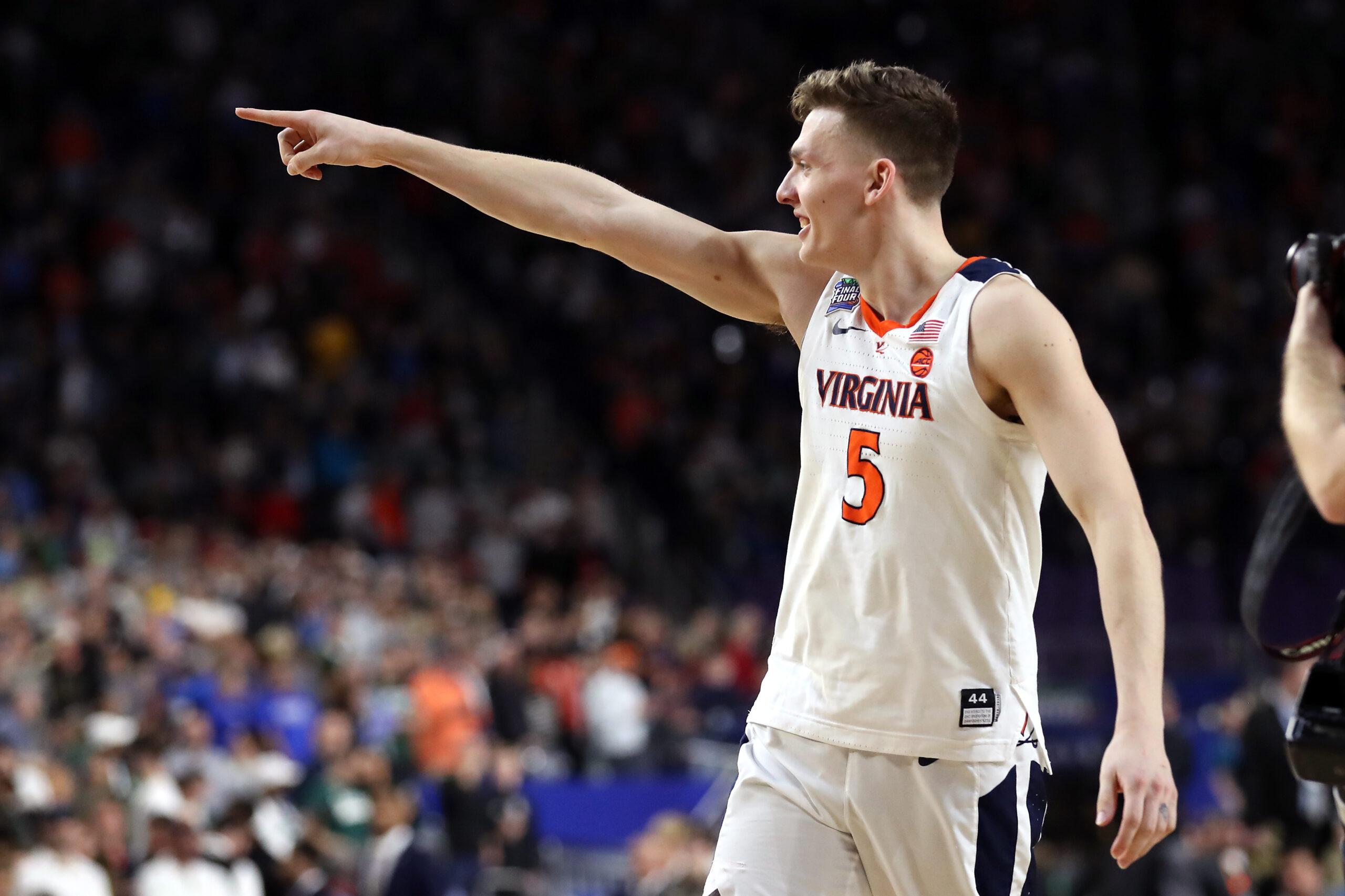Foul Play at the Final Four: Virginia’s Late Free Throws Break Auburn’s Heart
Kyle Guy hit three free throws with 0.6 seconds remaining to snatch victory from the Tigers and send the Cavaliers to the national championship game
For the second time in as many weeks, a Virginia player approached the free throw line with his team’s season in the balance. In the Elite Eight against Purdue, it was Ty Jerome, whose missed free throw led to Mamadi Diakite’s game-tying buzzer-beater. On Saturday, with a spot in the national championship game on the line, it was Kyle Guy—Virginia’s do-everything junior guard—who carried the Cavaliers’ campaign on his shoulders.
With just over five minutes remaining, the Hoos held a 57-47 lead against Auburn. After a stalemate first half, Virginia’s dominant defense asserted itself, and it seemed as if the Cavaliers were going to waltz to their first NCAA title game in school history. But Auburn had different plans. The Tigers rattled off a 14-0 run in the closing minutes, thanks to three Bryce Brown daggers from beyond the arc, to set up a frantic finish. With Auburn leading 61-57, Kyle Guy hit a 3-pointer with nine seconds remaining to bring Virginia back to within one. After a handful of free throws, a series of fouls, and a missed double-dribble violation by Jerome, Virginia collected the ball down 62-60 with just 1.5 seconds remaining.
Guy caught the inbounds pass in the corner, turned, and fired, only to see his shot ricochet off the side of the rim. But Auburn guard Samir Doughty contested the shot too aggressively and collided with Guy. The refs blew the whistle, Guy sank each of his three free throws, and this tournament’s ultimate cardiac kids claimed victory once more, 63-62.
“I could lie to you and say I knew I would hit them, but I was terrified,” Guy told CBS’s Tracy Wolfson after the game.
The scenario was reminiscent of one Auburn faced against New Mexico State in the first round. Up 78-76 with one second left on the clock, Bryce Brown fouled an Aggie shooter beyond the arc. Thankfully for the Tigers, the Aggies made just one of three attempts, and Auburn survived. Its ensuing run was the best in school history. Only once, in 1986, had the Tigers ever reached the Elite Eight. This season, they did one better, reaching their first Final Four.
On Saturday, the offensive success that fueled Auburn’s run was sporadic. Brown and Jared Harper—Auburn’s dynamic backcourt duo—combined for just 23 points on 36.4 percent shooting and Doughty was the only other Tiger to reach double figures. As a team, Auburn shot just 38.2 percent from the field, and save for their late-game run, never looked comfortable against a suffocating Virginia defense.
For the second consecutive season, and the third time since Tony Bennett became head coach in 2009, the Cavaliers clock in at the slowest pace in the country. Only once, in Bennett’s first season, have the Cavaliers been ranked higher than 336th in pace of play. He’s figured out how to use the Hoos’ glacial pace to their advantage: they’ve finished in the top 10 defensively in seven of the last eight seasons.
It took longer to see growth on the other side of the floor, but slowly but surely, the Cavaliers began scoring more efficiently. Bennett’s system, designed to minimize talent discrepancies, has produced one of the most balanced and effective teams in the country. This season, Virginia has its most talented squad in the Bennett era and has its most efficient offense on record, graded second nationally by KenPom.
Still, watching the Cavaliers play Auburn was akin to watching a tortoise bludgeon a hare in a footrace. The Tigers aren’t one of the fastest teams in the country—they ranked 153rd of 353 Division I teams entering the Final Four—but compared to Virginia, they sprint up and down the court. On Saturday, they were forced to play at Virginia’s pace. And their discomfort showed.
Against Kansas in the second round, Auburn sank 43.3 percent of their shots from 3. Against North Carolina in the Sweet 16, that rate swelled to 45.9 percent. The Jayhawks and the Tar Heels finished among the quickest teams in the country this season, ranking no. 66 and no. 6, respectively. In each of those games, the increased pace and Auburn’s penchant for forcing turnovers meant the Tigers were able to run in transition and catch their opponents off-balance to earn open shots. In the Final Four, they had no such luck. Virginia’s insistence on forcing Auburn into half-court sets meant the Tigers rarely got a clean look at the basket. They shot 29 percent from beyond the arc, their lowest conversion rate in the tournament and seventh-worst of the season. Four of those previous games when they shot worse from 3 came against power conference opponents and only one ended in an Auburn victory.
Saturday’s game was an anomaly for the Tigers, but it was more of the same for Virginia. In none of the Hoos’ five tournament games have they looked the part of a national champion. Virginia struggled early in its opening game against Gardner-Webb, had difficulty with Oklahoma and Oregon in the next two rounds, and needed a miracle to force overtime in its Elite Eight victory against Purdue. The Cavaliers have barely survived each of their contests. Each nailbiter ended with a victory. And now, Virginia is just one away from a national championship.